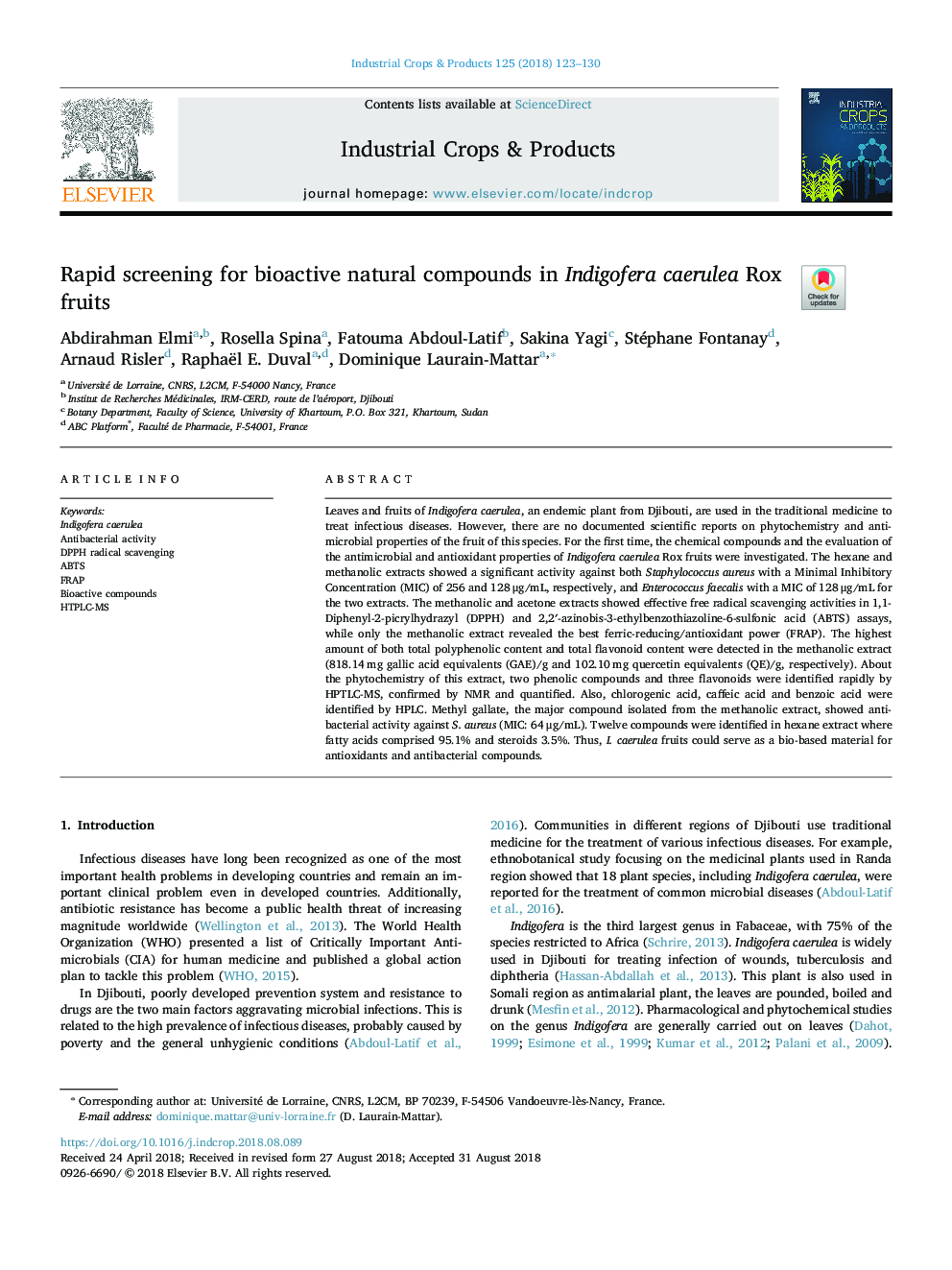| Article ID | Journal | Published Year | Pages | File Type |
|---|---|---|---|---|
| 8966050 | Industrial Crops and Products | 2018 | 8 Pages |
Abstract
Leaves and fruits of Indigofera caerulea, an endemic plant from Djibouti, are used in the traditional medicine to treat infectious diseases. However, there are no documented scientific reports on phytochemistry and antimicrobial properties of the fruit of this species. For the first time, the chemical compounds and the evaluation of the antimicrobial and antioxidant properties of Indigofera caerulea Rox fruits were investigated. The hexane and methanolic extracts showed a significant activity against both Staphylococcus aureus with a Minimal Inhibitory Concentration (MIC) of 256 and 128âμg/mL, respectively, and Enterococcus faecalis with a MIC of 128âμg/mL for the two extracts. The methanolic and acetone extracts showed effective free radical scavenging activities in 1,1-Diphenyl-2-picrylhydrazyl (DPPH) and 2,2â²-azinobis-3-ethylbenzothiazoline-6-sulfonic acid (ABTS) assays, while only the methanolic extract revealed the best ferric-reducing/antioxidant power (FRAP). The highest amount of both total polyphenolic content and total flavonoid content were detected in the methanolic extract (818.14âmg gallic acid equivalents (GAE)/g and 102.10âmg quercetin equivalents (QE)/g, respectively). About the phytochemistry of this extract, two phenolic compounds and three flavonoids were identified rapidly by HPTLC-MS, confirmed by NMR and quantified. Also, chlorogenic acid, caffeic acid and benzoic acid were identified by HPLC. Methyl gallate, the major compound isolated from the methanolic extract, showed antibacterial activity against S. aureus (MIC: 64 μg/mL). Twelve compounds were identified in hexane extract where fatty acids comprised 95.1% and steroids 3.5%. Thus, I. caerulea fruits could serve as a bio-based material for antioxidants and antibacterial compounds.
Related Topics
Life Sciences
Agricultural and Biological Sciences
Agronomy and Crop Science
Authors
Abdirahman Elmi, Rosella Spina, Fatouma Abdoul-Latif, Sakina Yagi, Stéphane Fontanay, Arnaud Risler, Raphaël E. Duval, Dominique Laurain-Mattar,
